5 References to Support the Use of AAC
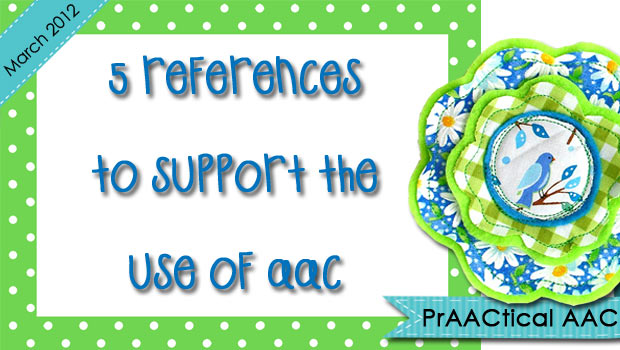
/5%20THINGS%20COOKIE.jpg) When I took my daughter to a specialist awhile back, she recommended a treatment that was a bit extreme. Her verbal explanation for the expensive and involved treatment made sense, but I still wasn’t convinced and asked it there was something we could read that explained the scientific underpinnings of the approach. She disappeared for a moment and came back with a task force report on the treatment that reviewed literature on this approach. Reading through it and seeing the studies, critiques, and responses helped us make an informed decision.
When I took my daughter to a specialist awhile back, she recommended a treatment that was a bit extreme. Her verbal explanation for the expensive and involved treatment made sense, but I still wasn’t convinced and asked it there was something we could read that explained the scientific underpinnings of the approach. She disappeared for a moment and came back with a task force report on the treatment that reviewed literature on this approach. Reading through it and seeing the studies, critiques, and responses helped us make an informed decision.
–
Chances are, many of you have had similar experiences. Trust in our healthcare professionals is critical, but when it comes to big decisions, we want to know the science that stands behind the options.
–
Making the decision to use AAC is a huge one for all of us, but families are especially burdened with its weightiness. Not only will they bear the brunt of the investment (time, effort, money, and hope), but they are frequently overwhelmed with other equally serious concerns.
–
We’ve noticed that SLPs can be somewhat reluctant to share the science behind their recommendations. When we talk to them about this, they frequently indicate that they just don’t know what to tell the families. Busy clinicians, many who graduated at a time before AAC courses were offered in our training programs, don’t have this information at their fingertips. From time to time, we’ll post lists to help SLPs looking for that information to use and share with families and other team members. Here, in our first list of scholarly articles, we focus on individuals with developmental disabilities.
–
1. Ganz, J.B., Earles-Vollrath, T.L., Heath, A.K., Parker, R.I, Rispoli, M.J., Duran, J.B. (2012). A meta-analysis of single case research studies on aided augmentative and alternative communication systems with individuals with autism spectrum disorders. Journal of Autism and Developmental Disorders, 42,1, 60-74.
–
2. Millar, D.C., Light, J.C., & Schlosser, R.W. (2006). The impact of augmentative and alternative communication intervention on the speech production of individuals with developmental disabilities: A research review. Journal of Speech, Language, and Hearing Research, 49, 248-264.
–
3. Schlosser, R.W., & Wendt, O. (2008). Effects of augmentative and alternative communication intervention on speech production in children with autism: A systematic review. American Journal of Speech-Language Pathology, 17(3), 212-230.
–
4. Mirenda, P. (2003). Toward functional augmentative and alternative communication for students with autism: Manual signs, graphic symbols, and voice output communication aids. Language Speech & Hearing Services in Schools, 34, 3, 203-216.
–
5. Mirenda, P. (2008). A back door approach to autism and AAC. Augmentative and Alternative Communication, 24, 219-233.
–
–
Filed under: PrAACtical Thinking
Tagged With: research, resources
This post was written by Carole Zangari

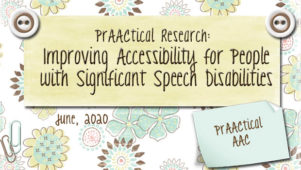
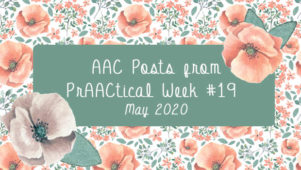
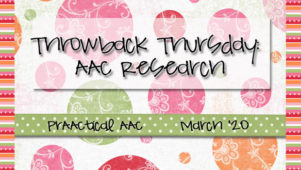
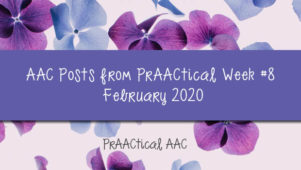
1 Comment
We have been so busy, passing each other in the hallways, that I thought I would comment here. Wow! Thanks for putting all this research together to make it easy to inform both families and professionals about the scientific research behind our some of our AAC recommendations. As we help our families become advocates, one of the first things I encourage them to do is ask for the research support behind any recommendation made whether the recommendation is from me, another clinician or evaluator, or teachers, etc. We will often find that as people review research/science they learn the principles and rationales of the approach which helps them see value in the recommendation and thus makes them more likely support and implement it. So in addition to helping them make informed decisions, it also can be one step in the clinical family training process.